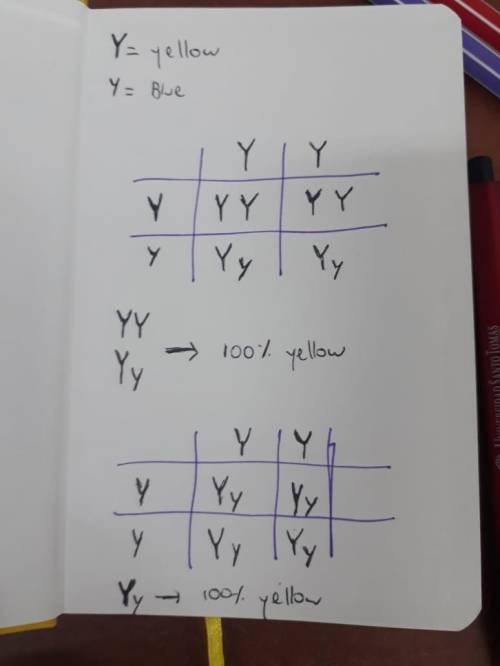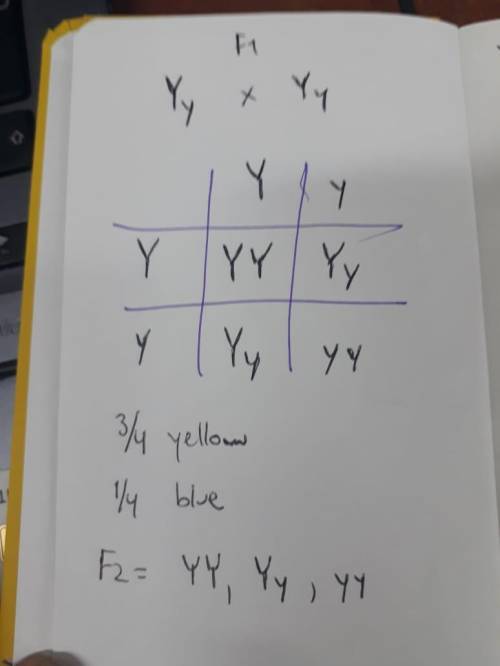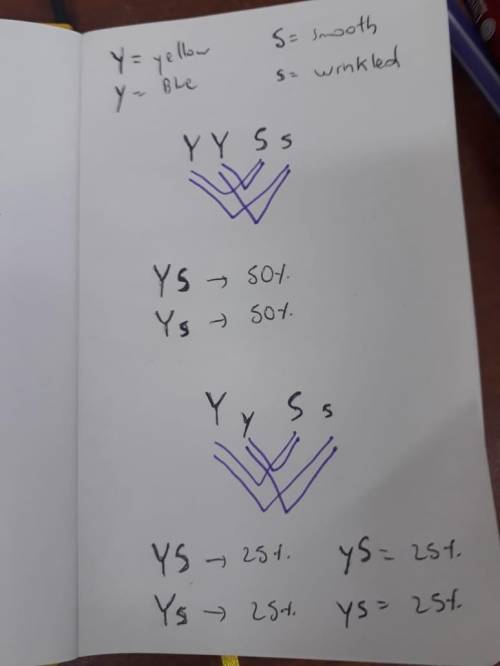
Experiment 1: punnett square crosses part 1: post-lab questions 1. set up and complete punnett squares for these crosses (remember y = yellow, y = blue): a. yy and yy b. yy and yy 2. answer these questions: a. what are the resulting phenotypes? b. are there any blue kernels? c. how can you tell whether or not there are blue kernels? 3. set up and complete a punnett square for a cross of two of the f1 from step 1 (above). 4. answer these questions: a. what are the genotypes of the f2 generation? b. what are their phenotypes? c. are there more or fewer blue kernels than in the f1 generation? 5. identify the four possible gametes produced by the following individuals (s = smooth, s = wrinkled): a. yy ss: b. yy ss:

Answers: 2


Other questions on the subject: Biology

Biology, 21.06.2019 19:30, Britney8394
Name the plastid and pigment likely to be found in the cells of (a) petals of sunflower (b) ripe tomato.
Answers: 2

Biology, 21.06.2019 20:00, annapittbull12
Chlorophyll is found in plant leaves and absorbs light from the sun to enable plants to perform photosynthesis. magnesium is an important component of chlorophyll. the concentration of magnesium ions is higher in the root-hair cells of plants than in the soil. which mechanism of ion uptake would best enable a plant to produce a steady supply of chlorophyll? osmosis diffusion passive transport active transport
Answers: 1

Biology, 22.06.2019 02:00, haleylecompte
Choose one animal (cheetas) and research on the internet what has contributed to this animal becoming "endangered" or "threatened." what animal you have chosen? how long has the animal been endangered or threatened? what has contributed to this animal’s endangered or threatened status? why is it important to save this animal from extinction? after researching and gathering facts, write a 350-word letter from the point of view of an animal rights' activist. be sure to include at least five facts that you learned from your research.
Answers: 3
You know the right answer?
Experiment 1: punnett square crosses part 1: post-lab questions 1. set up and complete punnett squ...
Questions in other subjects:

Mathematics, 23.06.2019 19:00


Mathematics, 23.06.2019 19:10



History, 23.06.2019 19:10

Mathematics, 23.06.2019 19:10

History, 23.06.2019 19:10







